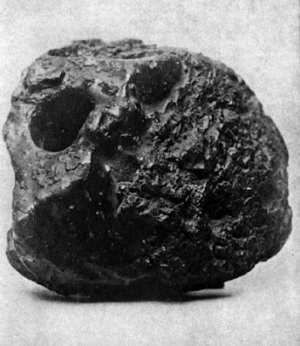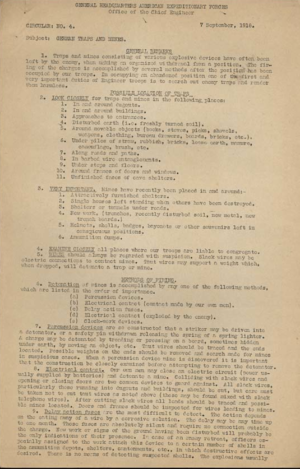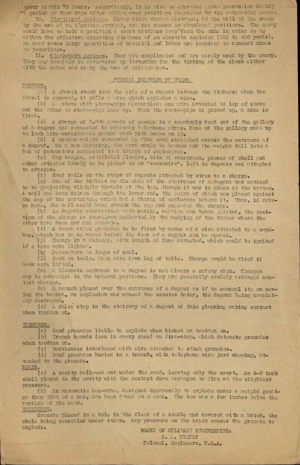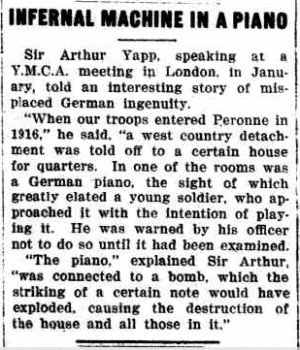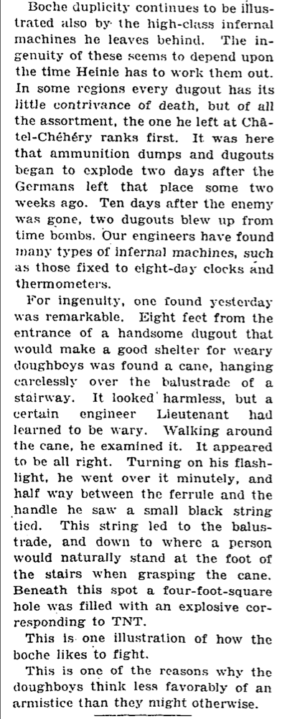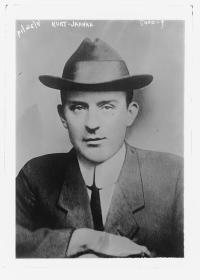
I’ve blogged before about the German sabotage campaign just before the US entered World War 1. I’ve been digging slowly through much new material with regard to Kurt Jahnke. Jahnke was one of the key German saboteurs operating in the USA before and during the First World War and along with his close colleague Lothar Witzke and a more distant colleague, Franz Rintelen, they played key roles in the extensive and, in my opinion, largely underestimated or unrecognized, IED campaign and associated disruptive activities in the period. This disruptive campaign involved extensive use of IEDs, biological warfare attacks (anthrax and glanders attacks on US soil), arson, encouraging labor disputes, encouraging Mexico’s entry into the war against the US, etc I’m building extensive files on this campaign, bit by bit.
There’s enough for a couple of books, and frankly I’m a bit overwhelmed and the material demands much more beyond a short blog. For those of you who haven’t heard of him, here’s a very brief potted history of Jahnke:
- 1888 Born Gnesen in West Prussia
- ? Enlisted in the German Navy
- ? worked in Peking as a member of the International Customs service, possibly as a German Agent
- 1909 Emigrated to the USA
- ? Enlisted in the US Marines and served in San Francisco, Pearl Harbor and the Philippines
- ? Discharged for medical reasons (malaria?)
- 1912 Posted to the German Consulate in San Francisco as a diplomatic official
- 1912 onwards – developed connections with China whilst in the San Francisco post
- 1916. Almost certainly involved in the Black Tom explosion, New Jersey
- 1916 Strongly suspected of fomenting and encouraging labor strikes in San Francisco
- 1916 Claimed to be responsible for sinking 14 allied munitions ships
- 1917 Almost certainly responsible for the Mare Island munitions depot explosion near San Francisco.
- 1917 Involved in other bombings on the US east Coast
- 1917 After declaration of war, operated from Mexico with numerous plots
- 1923 Undertook sabotage attacks against occupying French forces in the Ruhr, Germany
- 1920’s Possibly involved with official, but secret German collaboration with Russian forces
- 1920’s Possibly recruited as a Russian agent
- 1934 Formed the Jahnke Buro , a semi-official intelligence agency, aka “Abteilung Pfeffer” Possibly responsible for handling of a German agent in the US embassy
- 1939 By this date Jahnke’s “Abteilung Pfeffer” was under direct control of Rudolf Hess.
- 1941 – After Hess’s flight to Britain he “retired” . Some reports suggest he was fired in 1940
- 1943? – Tempted out of retirement by Walter Schellenberg, head of the Nazi’s foreign intelligence department to return to intelligence activities. Suggestions he opened a dialogue with Allied intelligence agencies in 1944
- 1945 – Fled to Switzerland
- 1945 – Returned to Germany, arrested and tortured by Russian SMERSH
- 1945- Killed by SMERSH or perhaps not till 1950… or perhaps not at all… suggestions that he worked for one Russian intelligence agency but was arrested by another in a turf war. Suspected by everyone of being a double agent of one sort or another.
As one might expect with such a full and complex life, establishing the truth is nigh on impossible. Certainly Jahnke at times claimed responsibility for things he probably hadn’t done, such as the sinking of the USS San Diego, which he claimed responsibility for to the Russians interrogating him. Other things about Jahnke worth considering, which I’m digging at:
- Could he have played a part in the 1916 “Preparedness Day bombing” in San Francisco
- If so, could he be involved in the 1921 Wall St bombing (there’s a possible connection)
- Details of his sabotage attacks on the Ruhr in 1921
- Details of the explosive devices he employed
- Details of the China connections
- Details of US and UK operations in Mexico to counter his activities (quite a bunch of stories there)
There’s lots more to come.

